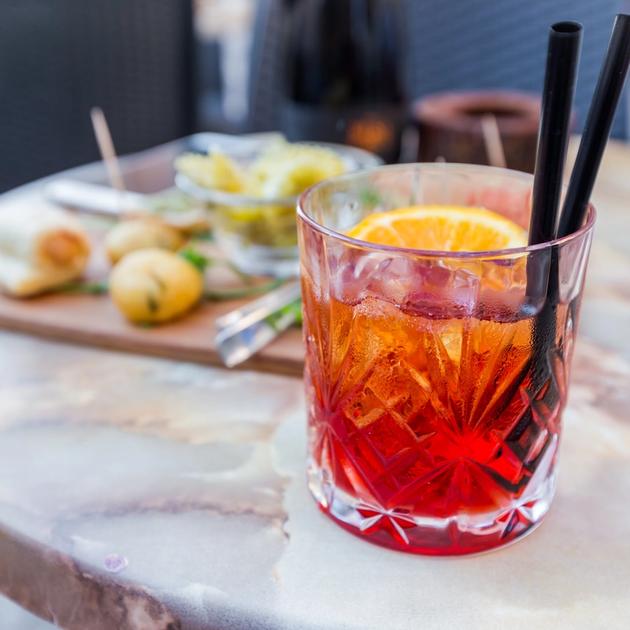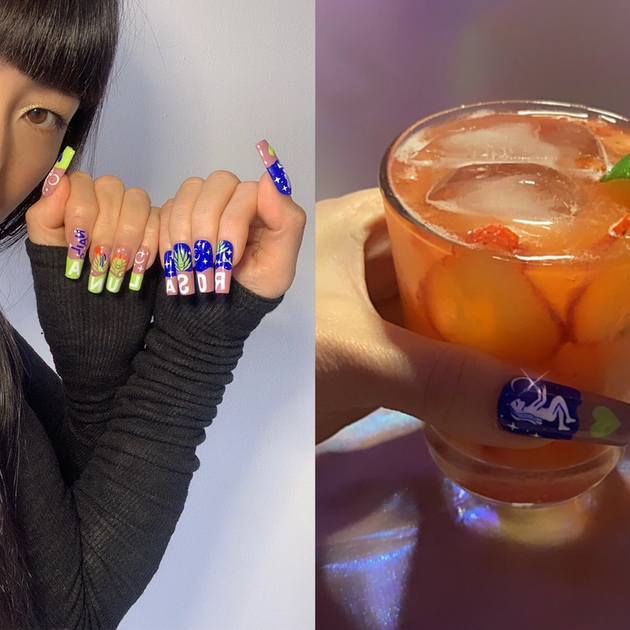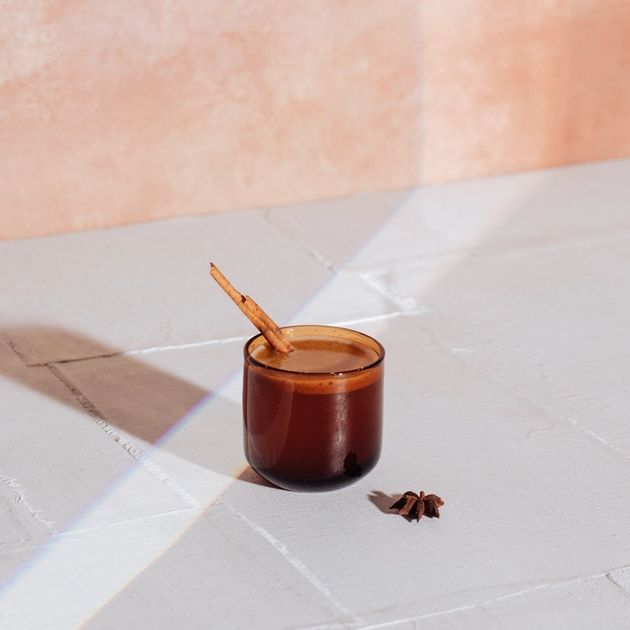What Is Mezcal?
Mezcal is a distilled spirit made from the one and only agave plant. In fact, it’s made from the heart of the agave plant (the piña). We’re not surprised; Mezcal is made with lots and lots of love, after all.
Mezcal is pronounced m-e-s-c-a-l; in Spanish, z’s are pronounced as s’s. The name itself means “oven-cooked agave” in Nahuatl (the language of Aztec/Mexica). The oven-cooked nature of mezcal is a critical element of its unique process, but more on that later...
Is it like Tequila?
Good question. No, Mezcal is not the same as tequila. Mezcal is tequila’s smarter, funnier, cutter cousin.
Technically, any spirit made from agave is classified as a type of Mezcal, making tequila a type of Mezcal. In that sense, maybe Mezcal is tequila’s smarter, funnier, cuter… parent? But we digress. To keep things simple, just think of it this way: all tequilas are Mezcals, but not all Mezcals are tequilas. And there are three significant differences to prove it.
They’re produced in different regions. In the same way that real champagne comes from France and true scotch is made in Scotland, real tequila and true Mezcal have different “homes” of their own. What sets a great Mezcal apart has a lot to do with the specific region it comes from.
They’re made with different types of agave. Tequila is made from one type of agave: weber blue agave. Mezcal, on the other hand, can be made from over 30 types of agave. With 30 agave plants to choose from, Mezcal has the versatility to be crafted and blended in many different ways. This versatility allows Mezcal to create various final products with slight nuances. Any and all of the agave connoisseurs out there know the difference.
They’re made differently. The production process is completely different for tequila vs. Mezcal. Mezcal gets its signature smoky flavor from the process of cooking the agave in underground pits. Tequila is made by steaming the piña of the agave plant in above-ground ovens and distilling the liquid into copper pots. While this may seem like a small difference, the production process is where the two liquors start to significantly diverge. Again, more on that later...
Where does it come from?
The true birthplace of Mezcal is Santiago, Matalán, Oaxaca. Agave plants are found south of the equator, including many parts of Mexico. However, Oaxaca is where almost 90% of all Mezcal comes from—and for a good reason.
What sets a great Mezcal apart has a lot to do with its specific terroir, or the environment in which it cultivated. Matalán soil is responsible for those distinct, earthy Mezcal notes that we love so dearly.
What is agave?
Agave is a plant that is native to hot and dry regions in the Americas. Agave plants aren’t typically eaten on their own, but the juice from the core of the plant is commonly used to create agave nectar. Agave nectar is likely what you’re familiar with when people talk about agave. The nectar is a sweetener that can be used as a substitute for sugar, honey, or artificial sweeteners.
There are almost 200 types of agave plants. Mezcal can be made from over 30 of them, all native to Oaxaca. Some frequently used types include Espadín, Tobaziche, Tepeztate, and many, many more. Each of these varieties brings a little something special to the taste of your Mezcal, whether the flavor is spicy, fruity, or even floral.
Are there benefits to drinking Mezcal?
Other than the pure indulgence of rich, complex flavors and a smooth finish? Yes. There are benefits to drinking Mezcal that go beyond its magical taste.
One of our favorite things about mezcal is the simplicity of its ingredients. Mezcal is made with only agave, water, and obviously, lots of love. It has zero carbs, zero added sugars, and is vegan and gluten-free. A glass of Mezcal is a glass of pure, wholesome ingredients. We’ll drink to that.
Most alcohols have a ton of added sugar, artificial sweeteners, and other questionable chemicals. If you can’t pronounce something on the ingredient list, chances are you shouldn’t be putting them into your body. By steering clear of additives, your body will feel the difference; waking up after a night of drinking Mezcal just feels better.
Mezcal is an established, classy liquor, which means drinking Mezcal makes you an established, classy person (that’s how it works, right?). Chugging mezcal just to get drunk is straight-up blasphemous. Mezcal is old and wise, with so much to offer; it is intended to be sipped and enjoyed, not merely to be “thrown back.” By being such a refined and unique drink, it’s often consumed more slowly and thoughtfully, with more care. Slower sipping often leads to drinking less (or just the right amount, if you ask us), leading to fewer hangovers after a night of Mezcal.
The last distinction to make is that Mezcal is made from 100% agave. Tequila, on the other hand, only needs to be 51% agave to be labeled and sold as tequila (in the USA). This allows for 49% of unnecessary fillers and chemicals.
When did Mezcal become popular?
Mezcal is v hot stuff right about now (in our minds, it’s always been, but that’s beside the point...).
Some may say we’re biased, but in our humble opinion, Mezcal is the world’s most artisanal spirit out there. The Mezcal you see on shelves today is the same Mezcal that was made hundreds of years ago. While Mezcal may have experienced a boom in popularity more recently, it’s important to remember that it’s been serving its homeland community for over a thousand years. More than just something to drink, Mezcal has been a family member and an integral element of heritage to many. It’s been used to cure children’s rashes, to welcome loved ones home, and to serve as a social glue at gatherings and celebrations.
Mezcal is classified as a nascent spirit, a category that grew by 40% last year. And for the very first time, the United States became the world’s largest market for Mezcal in 2019, totaling 71% of all Mezcal exports.
The people have spoken; Mezcal is damn good.
Where Is It Made?
Mezcal is made in nine different areas of Mexico; Durango, Guanajuato, Guerrero, San Luis Potosi, Tamaulipas, Zacatecas, Michoacán, Puebla, and Oaxaca. That said, Oaxaca is the true heartland for this beloved spirit, home to almost 90% of all Mezcal made.
The devil is in the details. When it comes to Mezcal, it’s in the regions. The taste of Mezcal will vary greatly depending on where the used agave plant comes from. We said it once, and we’ll say it again: the specific region it comes from is what sets a Mezcal apart.
If Mezcal is magic - which it obviously is - then Oaxaca is its wizard. We’re all about the magic of Mezcal here, so we made sure Rosaluna was crafted in the magical foothills of Oaxaca. And boy, can you taste it.
How Is It Made?
Making Mezcal is a beautiful 5-step process. Here’s how our beloved Rosaluna is made:
Farming.
It all starts with planting baby agaves, nurturing them with water and sun for up to eight years. All farming for Rosaluna happens at a single estate farm, one that’s been around since the 1750s. As our baby agaves grow, they are continually cleaned by hand and maintained with fresh Matatlán soil.
When they’re all grown up, we hand-select the agaves for harvest. The leaves (pencas) are removed, leaving only the heart of the agave (the piña), which contains the most sweetness.
Roasting.
Once the agaves have been harvested, we start a fire in the ground using pinewood logs from certified forests. We cover the fire with stones and carefully pile on the agaves., making sure to use the perfect heating point that will generate constant and uniform roasting. This patient process (that takes up to five whole days) adds that distinct (and delicious) note of cookedagave to Rosaluna.
By slow roasting, we’re able to strike the perfect balance between smokiness and cooked agave. True artisanal Mezcals use this traditional method rather than more modern (and one-note, if you ask us) techniques. While it requires more diligence and patience, this extra TLC gives Mezcal the unique smokiness and multi-dimensional taste you’ll find in a bottle of Rosaluna. Well worth the wait, if you ask us.
Milling.
In this part of the process, we use a mash or a tahona mill, that is quite literally pulled by horses to take the juice and fiber out of the cooked agave plant.
Fermenting.
To begin the fermentation process, we add water to the agave’s juice and fiber. The process takes place in one of our 12 pinewood open fermentation tanks and can take up to eight days, although warmer weather tends to make the process go faster.
This is where the magic really starts—the sugar slowly but surely converts into alcohol.
Distilling.
In our double distillation process, we begin by mixing the fermented agave juice with the fiber. In the second distillation, we take the head and heart of the first distillation and distill it again to get an even more enhanced flavor and alcohol. This process separates the water from the alcohol, capturing the purest alcohol into the final spirit of Rosaluna.
Once our farm’s matriarch approves the final distillate, the spirit is bottled and labeled onsite at the Hacienda. And just like that, it’s on its way to you.
And That’s the Magic of Mezcal.
By undertaking the entire Mezcal making process in a single-estate operation, Rosaluna has an uncanny advantage over quality control and consistency for how our Mezcal is made.
The final product? A bright, brilliant, complex, and layered masterpiece. Full of citrus notes and underlying tropical fruit aromas, you’ll love her wonderfully smoky essence.
Remember, Rosaluna isn’t just made. It’s crafted with agave, water, and a whole lot of love.
External Sources
https://www.edenproject.com/learn/for-everyone/plant-profiles/agave
https://www.decanter.com/spirits-1/learn-about-tequila-403851/







